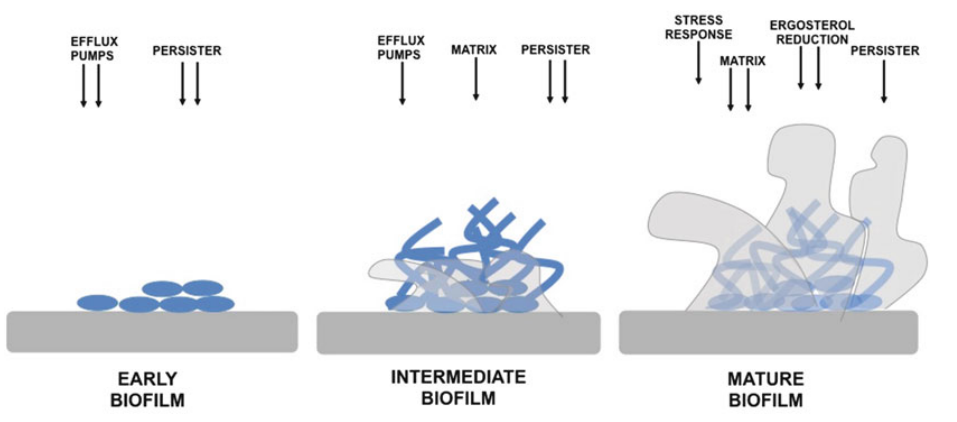With the powerful antifungal drug discovery platform, Creative Biolabs is fully competent and dedicated to providing different antifungal drug discovery service modules including target identification and validation, Hit identification, Hit to lead, Lead optimization, and IND enabling to meet a wide range of discovery requirements of worldwide numerous clients.
We have introduced various virulence factors which are produced by fungi to contribute to the pathogenicity of fungal diseases. During the virulence factors, one of the most important factors is filamentation and biofilm formation. Our scientists are experienced in this field and are committed to supporting our clients to develop the potential antifungal drugs based on targeting filamentation and biofilm formation.
Filamentation
Filamentation refers to anomalous growth which results in elongation rather than division. It’s a survival strategy to protect fungi from medicines taken from the host. Filamentation process is related to biofilm formation, and both of them are functional for fungal pathogenicity. GlcNAc plays an important role in yeast-filament transition which is essential for the virulence. In addition, cAMP signaling pathway plays a central role in filamentation formation. The involved transcription factors include Tec1, Gat2, Nrg1, Sfl1, Sfl2, and Ash1 which contribute to filamentation regulation.
Biofilm Formation
Fungal biofilms are complicated communities of cells and hyphae which can be attached to a substrate. Diverse fungi have the capability of biofilm growth. Biofilm formation contributes to the fungal pathogenic process, recurrent infection and hence be treated as an important virulence factor. The main mechanism of antifungal resistance caused by biofilm is the extracellular matrix formation, see Fig.1. This is a kind of physical barrier which can prevent the medicines from entering the fungi and displaying the antifungal activities. In addition, biofilm formation can also show resistance to host immune cells.
 Fig.1 Schematic overview of fungal resistance mechanisms involved in various biofilm phases. (Borghi, 2016)
Fig.1 Schematic overview of fungal resistance mechanisms involved in various biofilm phases. (Borghi, 2016)
Since the currently available antifungal agents only have minimal activity against biofilm caused fungal infections, we are indeed in need of novel approaches to eradicate the infections, see Fig.2. Here are different strategies for anti-biofilm to treat fungal diseases.
-
High-dose therapy with available antifungals;
-
Anti-infective lock therapy;
-
Exploiting combination therapy;
-
Disrupting quorum sensing;
-
Targeting extracellular matrix;
-
Natural products.
 Fig.2 Anti-biofilm strategies. (Nett, 2014)
Fig.2 Anti-biofilm strategies. (Nett, 2014)
Creative Biolabs offers our clients with various modules that cover antifungal drug discovery services, from target identification to IND enabling. A package services or any individual modules are available for our clients. To achieve the best efficacy, we do recommend our package services, and we’re committed to taking care of your projects from scratch to full development. For more details regarding antifungal drug discovery, please feel free to contact us to assist you.
References
-
Borghi, E.; et al. Fungal Biofilms: Update on Resistance. Adv Exp Med Biol. 2016, 931: 37-47.
-
Nett, J.E. Future directions for anti-biofilm therapeutics targeting Candida. Expert Rev Anti Infect Ther. 2014, 12(3): 375-82.
For Research Use Only.


 Fig.1 Schematic overview of fungal resistance mechanisms involved in various biofilm phases. (Borghi, 2016)
Fig.1 Schematic overview of fungal resistance mechanisms involved in various biofilm phases. (Borghi, 2016)
 Fig.2 Anti-biofilm strategies. (Nett, 2014)
Fig.2 Anti-biofilm strategies. (Nett, 2014)


